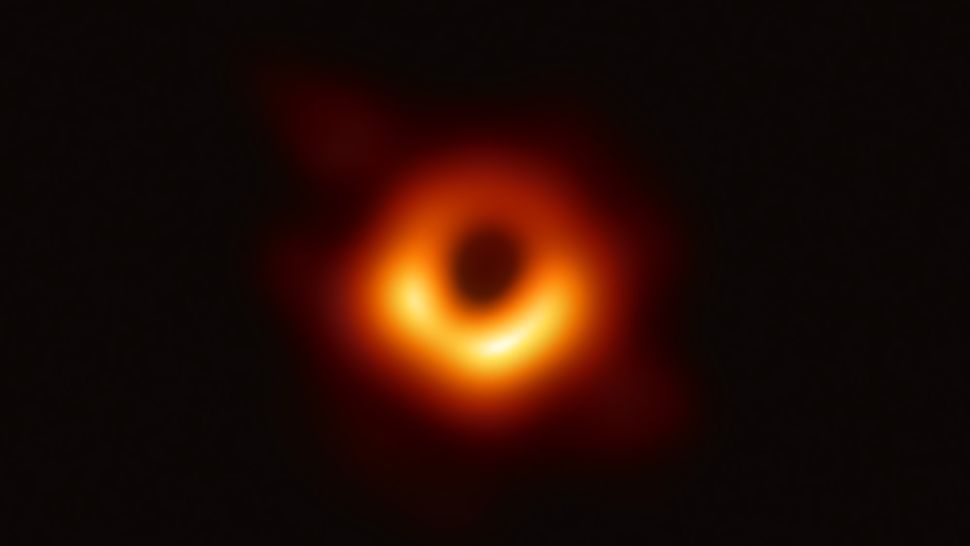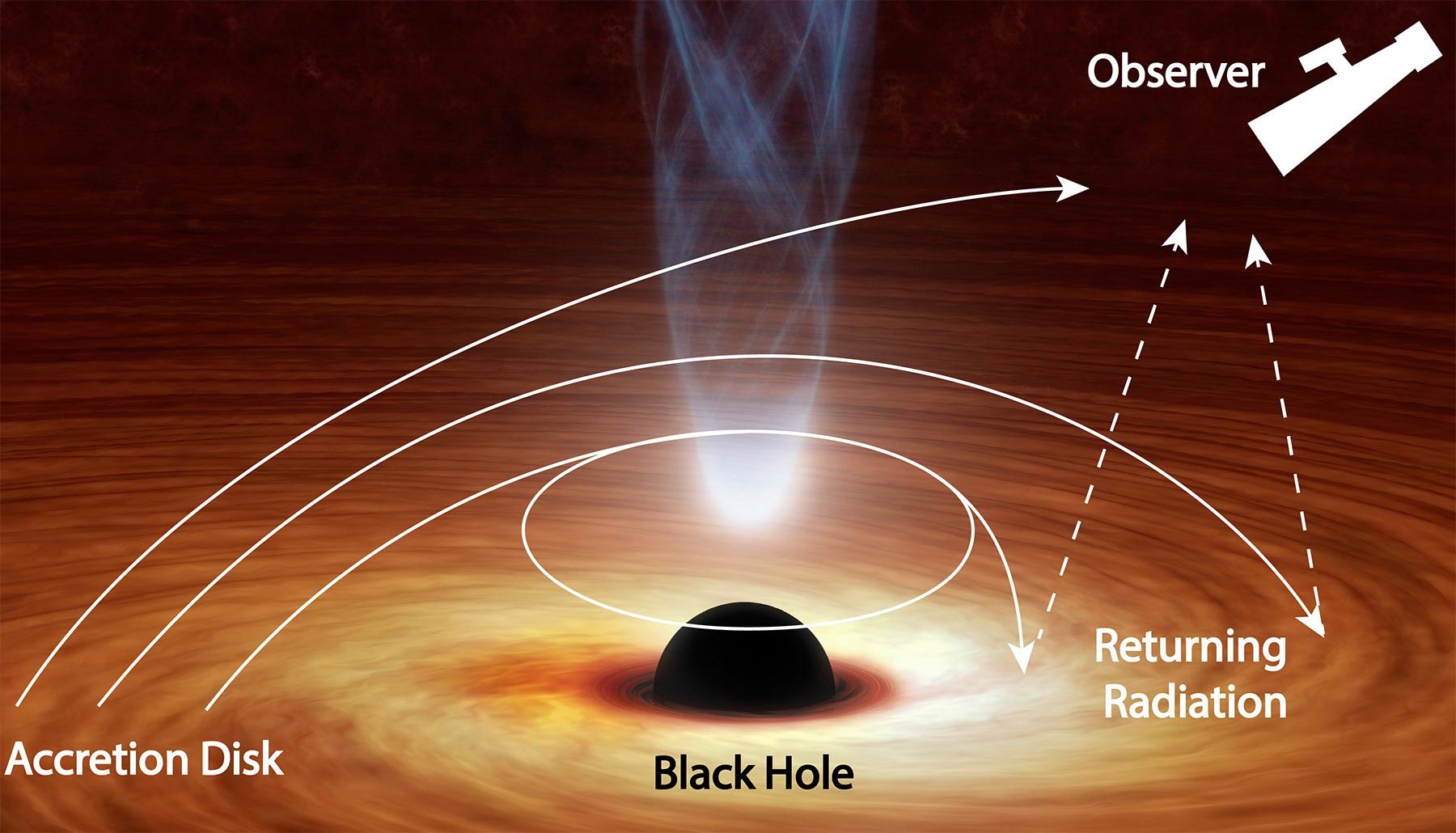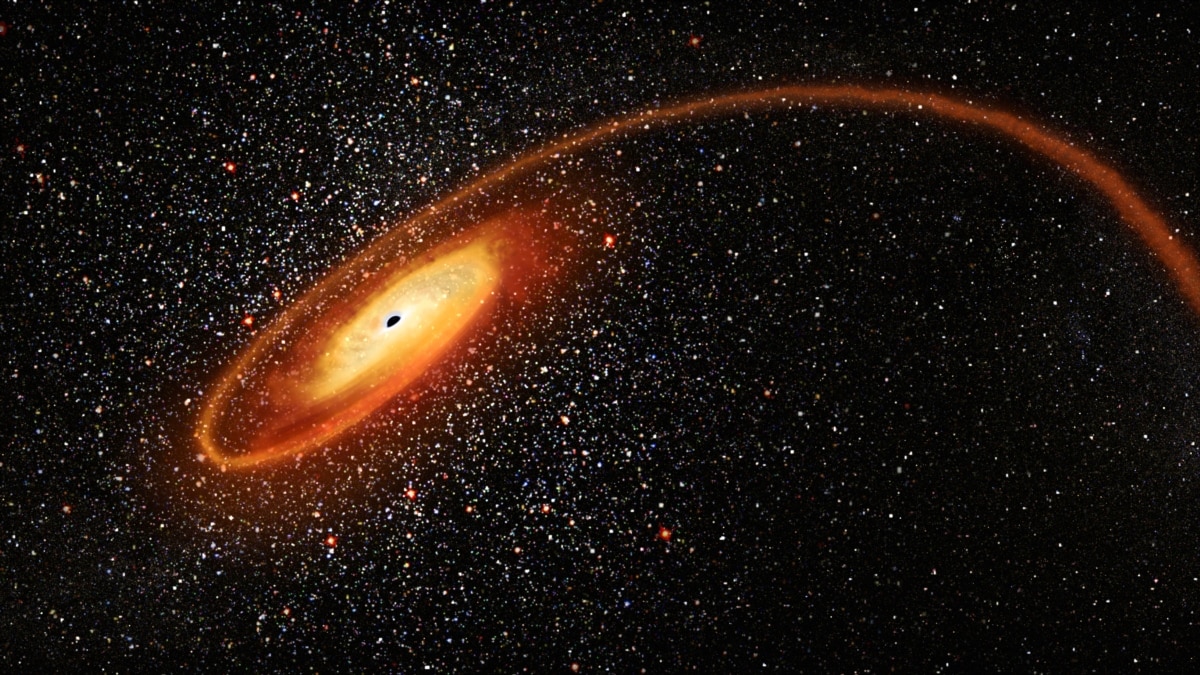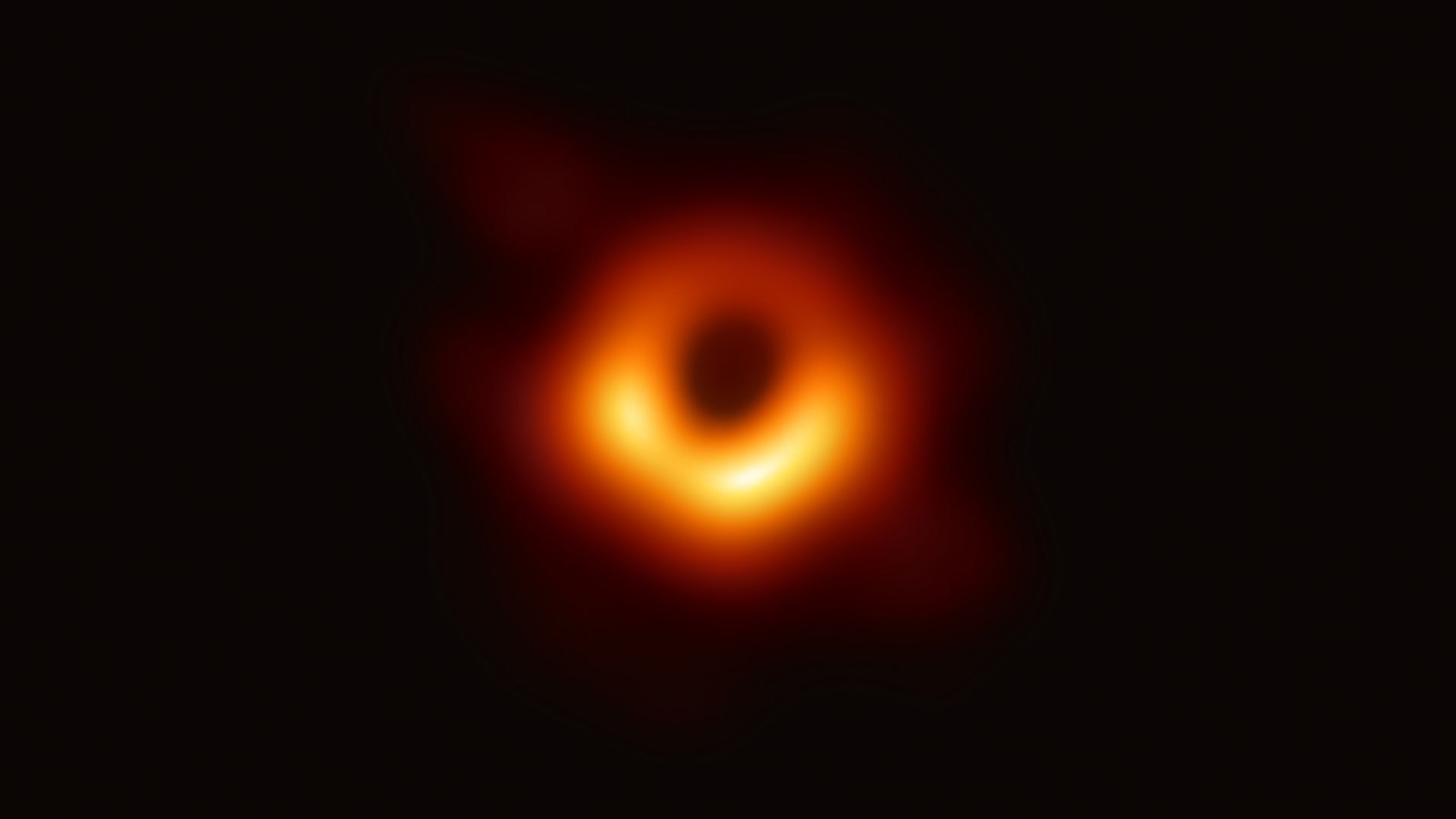
One year ago, scientists captured the unphotographable when the Event Horizon Telescope unveiled a fiery orange ring on a black background that became instantly recognizable. Behold, the first photo of a black hole.
The black hole in that image lurks at the heart of a galaxy known as M87, which is the sort of moniker modern astronomers use to name what they study. The black hole doesn't even get its own name, independent of the galaxy that surrounds it. It's a, let's say, abstruse way to refer to an object containing billions of times the mass of our sun packed together unimaginably densely.
Many things are taking place:
Event Horizon Telescope observes a black hole-powered jet | MIT News
The multi-wavelength 3C 279 jet structure is seen in April 2017. The wavelengths (λ) in millimeters, observation days, and arrays are noted in each panel.
Images courtesy of J.Y. Kim (MPIfR), Boston University Blazar Program (VLBA and GMVA), and the Event Horizon Telescope Collaboration.
* * *
The EHT collaboration is continuing to extract information from the groundbreaking data collected in its April 2017 global campaign. One target of the observations was a galaxy 5 billion light years away in the constellation Virgo that scientists classify as a quasar because an ultra-luminous source of energy at its center shines and flickers as gas falls into a giant black hole. This target, labeled 3C 279, contains a black hole about 1 billion times more massive than our sun.
Black Hole Bends Light Back on Itself – Proves Theory Predicted More Than 40 Years Ago

Now, a new study accepted for publication in The Astrophysical Journal offers evidence that, in fact, not all of the light streaming from a black hole’s surrounding disk easily escapes. Some of it gives in to the monstrous pull of the black hole, turns back, and then ultimately bounces off the disk and escapes.
“We observed light coming from very close to the black hole that is trying to escape, but instead is pulled right back by the black hole like a boomerang,” says Riley Connors, lead author of the new study and a postdoctoral scholar at Caltech. “This is something that was predicted in the 1970s, but hadn’t been shown until now.”
Astronomers Identify 'Missing Link' Mid-Sized Black Hole

Researchers used data from NASA's Hubble Space Telescope and two X-ray observatories to find the black hole, which was in the process of destroying a nearby star.
Black holes are extremely dense objects possessing gravitational pulls so powerful that not even light can escape.
The newly identified black hole is more than 50,000 times the mass of our sun. It sits about 740 million light years from Earth in a galaxy containing far fewer stars than our Milky Way. A light year is the distance light travels in a year, about 9.5 trillion kilometers.
Quite a lot has been going on:
Black Holes Are Seen To Fold Light Back Onto Themselves

As our simulations and observations have gotten more sophisticated, we've learned some interesting things. One of these is how material near a black hole can get so superheated. Many black holes have a disk of material closely orbiting them known as an accretion disk. These often emit powerful x-rays. By observing these bright disks we can understand how black holes grow and evolve.
Recently a team observed one particular x-ray region near a black hole, and found it rather odd. When they studied the spectrum of x-rays, they found it included both emission and reflection effects. Most of the light was being emitted from the hot gas of the accretion disk, but some of the light was caused by x-rays reflecting off the disk. Since the accretion disk is the only thing in the region emitting x-rays, the scattered light must come from the disk as well.
Waiting on a photo of a black hole - Axios

Why it matters: The Event Horizon Telescope collaboration is expected to one day capture a clear photo of the black hole at the center of the Milky Way — revealing exactly what's going on in the heart of our own galaxy.
Details: The EHT uses a network of powerful radio telescopes around the world to take observations in tandem and piece together images of black holes.
Yes, but: The collaboration is still planning to use the data they've already gathered to learn more about black holes.
Let's learn about black holes | Science News for Students

Until last year, every image you ever saw of a black hole wasn't real. It was an artist's depiction. Then, scientists turned to a network of observatories called the Event Horizon Telescope, or EHT. The network zoomed in on the M87 galaxy and took the first-ever picture of a black hole.
The image wasn't as detailed as those artists' drawings. It looked like a fuzzy orange donut. But for something that astronomers had long thought was unseeable, the picture was very good. That fuzzy ring was a disk of bright gas that surrounds the black hole. The black hole appears as only a black spot because nothing — including light — can escape its incredible gravitational pull.
Chacos column: Climbing out of April's black hole of time | PostIndependent.com

COVID-19 is causing the social disruption I've been yearning for since watching the early 1960s television show "Leave it to Beaver" as a child. And it's not for the ability to clean my house wearing a dress and pearls like June Cleaver, but it's for the new normal I want to embrace on the other side.
* * *
By nightfall, I'm emotionally and physically spent, but in spite of my third-rate home-school program, I'm finding the happy.
Fear plays into our phobias and fuels our desire for safety. It's what permits some of us to sit and swallow daily, irrational remarks with unconditional devotion. To move through fear mongering, I'm finding the facts without accepting "just a feeling" from the Situation Room. And I promise not to hoard any more toilet paper.
Happening on Twitter
1 year ago, the world saw a black hole for the first time. Here's how it got a Hawaiian name.… https://t.co/U8GADX8R4w SPACEdotcom (from NYC) Mon Apr 13 12:28:32 +0000 2020
One year ago today, @BTS_twt gifted the world with #MapOfTheSoulPersona 💖 Listen now 🎧: https://t.co/nzao8xElks https://t.co/xpYHQ1yZYf amazonmusic (from Seattle) Sun Apr 12 22:25:14 +0000 2020
40 years ago today, the world of metal was changed with the epic release of the debut album from @IronMaiden! Zia i… https://t.co/K9K7r5RW2O ZiaRecords (from Phoenix, Tucson, Vegas) Tue Apr 14 17:30:00 +0000 2020
No comments:
Post a Comment